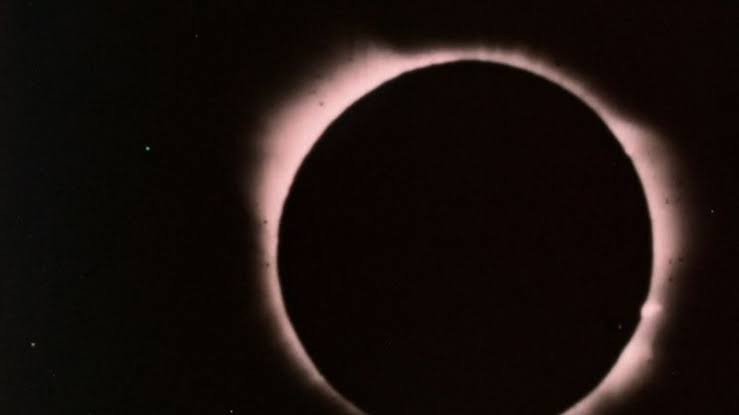The mesmerizing phenomenon of a total solar eclipse has captured the imagination of humanity for millennia. During these rare events, the sun’s brilliant disc is obscured by the moon, plunging the surroundings into an eerie darkness, with a radiant ring of light encircling the moon. One of the most intriguing aspects of this spectacle is the apparent similarity in size between the sun and the moon, a remarkable coincidence that allows for the spectacular display. This article delves into the science behind this celestial dance and the factors that contribute to this captivating alignment.
Lunar Orbit and Earth’s Perspective
The moon orbits around Earth at an average distance of approximately 238,855 miles (384,400 kilometers). Its position in space is such that it subtends an angle in the sky similar to that of the much larger sun. This alignment is the first piece of the puzzle that leads to the sun and the moon appearing to be the same size during a total solar eclipse.
Sun’s Distance and Diameter
Though the sun is significantly larger than the moon, with a diameter approximately 400 times greater, it compensates for this size difference by being situated at an average distance of about 93 million miles (150 million kilometers) from Earth. This vast distance makes the sun appear roughly the same size as the moon when observed from our planet.
Occurrence and Rarity
The alignment necessary for the sun and the moon to seem the same size is indeed a rare event. Total solar eclipses occur when the moon, sun, and Earth align perfectly, but they are not visible from every location on Earth. The occurrence of such an alignment is relatively infrequent due to the celestial mechanics involved.
Visual Effect of Total Solar Eclipses
When the moon passes directly between Earth and the sun during a total solar eclipse, the moon’s shadow is cast onto Earth’s surface, resulting in a mesmerizing natural spectacle. The gradual obscuration of the sun’s disc by the moon creates a wondrous show for observers in the eclipse’s path.
Conclusion
The captivating sight of a total solar eclipse, where the sun and the moon appear to be the same size in the sky, is a splendid example of the cosmic wonders that unfold around us. It is a beautiful coincidence, brought about by the precise alignment of the moon’s orbit and the sun’s distance from Earth. As observers, we can revel in the intricate dance of celestial bodies that occasionally graces our planet with this awe-inspiring event. So, the next time you find yourself under the path of a total solar eclipse, take a moment to appreciate the grandeur of the universe and the fascinating coincidence that makes this celestial show possible.
